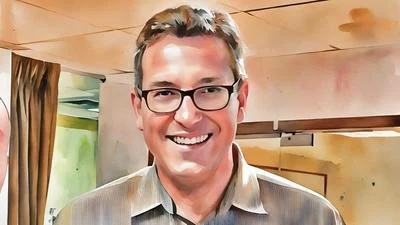The Congressional Record is a unique source of public documentation. It started in 1873, documenting nearly all the major and minor policies being discussed and debated.
“NATIONWIDE DIFFERENTIAL GLOBAL POSITIONING SYSTEM” mentioning the U.S. Dept. of Transportation was published in the Senate section on pages S2681-S2682 on March 15, 1999.
The publication is reproduced in full below:
NATIONWIDE DIFFERENTIAL GLOBAL POSITIONING SYSTEM
Mr. JOHNSON. Mr. President, today is a great day for South Dakota and the nation as March 15, 1999, marks the operation of a Nationwide Differential Global Positioning System
(NDGPS) site in Clark, South Dakota. This morning, Secretary of Transportation Rodney Slater officially ``flipped the switch'' on the Clark site, which activated the Coast Guard's expansion of its maritime global positioning system into the NDGPS. The Clark site, along with one in Whitney, Nebraska, will provide South Dakota with complete NDGPS service at no fee.
It is not often that a Senator from South Dakota has the opportunity to work with the Coast Guard on a project that benefits the people of my state. About two years ago, Rudy Persaud with South Dakota Department of Transportation contacted me about a technology that was developed to find ships out at sea. Rudy, along with a number of community development districts in my state, convinced me that this same technology could have enormous benefits on the prairies of South Dakota. In fact, the benefit to cost ratio for the NDGPS system is an astounding 150 to 1, with future uses for the technology appearing almost limitless.
Working with the development districts, the South Dakota Department of Transportation's goal was to map every mile of every road in the state of South Dakota to give the state and local governments the ability to develop their communities and allocate important highway funds.
I was pleased to introduce legislation in 1997 to expand the Coast Guard DGPS into a nationwide system. With the help of Senator Daschle, the legislation was added to the Department of Transportation's annual appropriations bill.
Throughout the process of securing funding for NDGPS, I have become aware of the numerous benefits NDGPS has for rural states like South Dakota. Four nonprofit planning districts in South Dakota currently use the technology for mapping roads. In some counties, NDGPS will be integrated with E-911 systems to provide accurate addresses for rural households.
NDGPS will allow hospital helicopters to electronically locate accident sites. The need for such technology was evident two winters ago when a Webster woman became stranded in her car in the middle of a blizzard. Running low on gas, and with the temperature around -50 degrees, it took rescue crews several hours to find her and take her to safety.
The US Geological Survey will also map potential flood areas in the state, potentially saving lives and millions of dollars in property. Considering the farms and communities already inundated with flooding from the past two years, I am pleased this technology will allow South Dakotans to take a proactive approach to identifying potential flood areas.
The Mid-Dakota Rural Water System is using NDGPS to locate PVC pipeline for its system that will provide clean drinking water to over 30,000 South Dakotans who currently rely on wells or municipal water trucked to their home.
One of the most promising benefits of NDGPS technology will probably come in agriculture, South Dakota's number one industry. I look forward to working with agriculture leaders in South Dakota to promote and support this technology in a way that makes NDGPS an affordable and accessible tool. NDGPS, used in precision farming, may save $5 to 14 per acre by showing farmers exactly how best to apply fertilizer and chemical inputs on their land, so as to treat the land well for future generations while cutting costs now. NDGPS-based field mapping helps determine more accurate yields and makes it easier to more accurately utilize fertilizers, chemicals, and crop inputs. This technology can also be used by farmers to keep better crop production records. For example, this technology makes it possible for a properly equipped spray rig to switch chemicals or rates of application to address a specific weed problem in a specific section of the field.
As of today, March 15, 1999, the NDGPS technology is available in every community in South Dakota. I want to commend Rudy Persaud and the many others involved with NDGPS for their dedication and hard work and look forward to working with them on future uses of this incredible technology.
____________________








